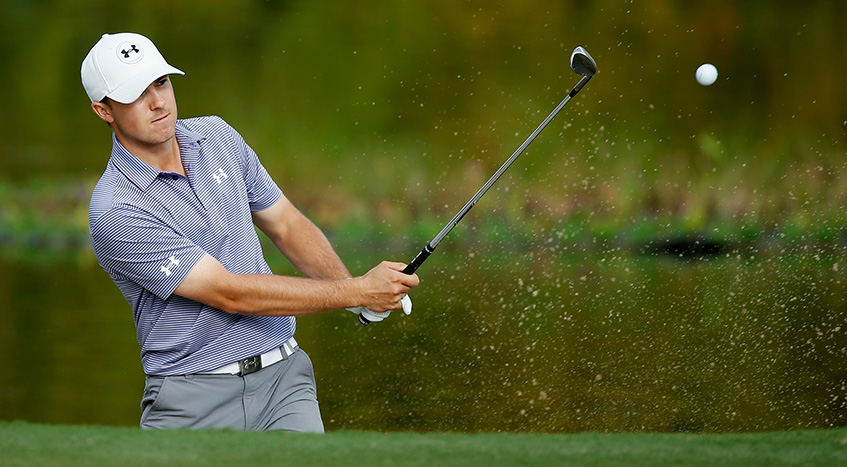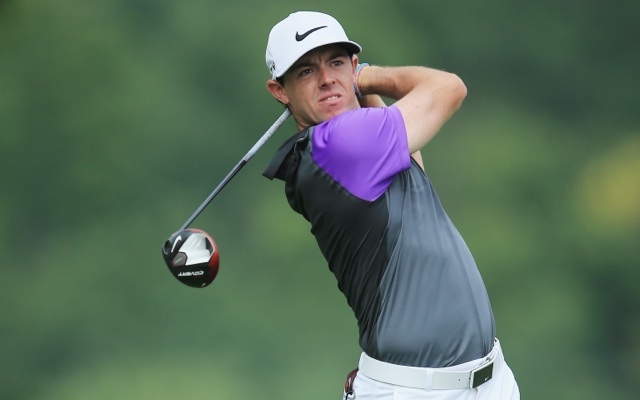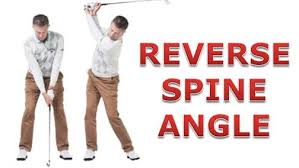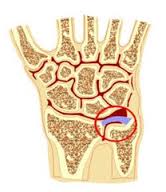Ask a question or book an appointment today on
01344 845801 or email info@scorpiophysio.com

Join the mailing list
We'll keep you in touch with all the latest news from the clinic.
Be the first to find out about new innovations, offers and much more.
GOLF 'The Good, The Bad and fill in the blank' !
I was in high school and about to start university to study Physiotherapy when Tiger Woods turned pro in 1996. Until then golf was perceived amongst the public to be more of a game as opposed to a sport. It was rare to find a golfer who was serious and committed – or who even recognised the value of physical literacy and fitness in their golf performance. The one glaring exception was Gary Player, who was and still is remarkable in his commitment to physical conditioning.
THE GOOD
In the last couple of years we have witnessed Rory McIlroy win three majors by the age of 25. He was the first European to achieve this level of success. In the last couple of months we have seen Jordan Speith won his first major with a score of 270 (-18); he also tied the 72-hole record set by Tiger Woods in 1997 and became the second youngest Masters winner after Woods. This is the new generation of golfers who grew up idolising Woods. Their understanding and attitude towards fitness , conditioning and athleticism send out a foreboding message to their competitors: ‘GET BUSY TRAINING or GET LEFT BEHIND”.
It cannot be denied that golf is a hugely technical pursuit, and golf skill (whether it is shot making, course management or ball striking) will always remain the central tenet of golf performance. However, McIlroy and Speith prove that maximising one’s ability to build power, speed and distance around such golf skill is becoming more and more necessary to compete and challenge for victories. In high performance sport, none can afford to ignore the realm of physical conditioning.
Golf is a rotational game. An effective swing requires the club head to make contact with the ball consistently, accurately and as fast as possible without sacrificing movement efficiency. Some of the top touring professionals can generate club head speeds of over 120 miles per hour. To hit consistently a small target the size of a golf-ball with predictable accuracy at such speed requires extraordinary timing and sequencing in the golf swing. Whilst a few players are blessed with natural timing (Woods and McIlroy) most have to work very hard to develop sufficient neuromuscular control. Timing and sequencing are required to generate power from the ground up, rotating the trunk around the stable pelvis with hips fully loaded: and then, like a whipping action, the downswing is initiated by hips, followed by the trunk and finally the arms and the club head being ‘bull-whipped’ towards the golf ball. This requires appropriate timing in the back swing to load the kinetic chain with ‘elastic potential energy’ and the correct sequence of acceleration-deceleration in the downswing to generate controlled explosive rotational power.


THE BAD
The quest for a perfect swing amongst golfers, amateurs and professional alike is unending. There is no perfect swing! Jim Furyk, Tiger Woods, Bubba Watson, Eamonn Darcy, Ernie Els, all have their idiosyncratic stance position, backswing and method of initiating the downswing: but what most top professionals will share is the impact position and the segmental sequencing of the downswing to impact. Ultimately, THE BEST SWING IS THE ONE THAT IS BEST SUITED TO AN INDIVIDUAL’S OWN PHYSICAL CAPABILITIES. However, this can be a grey area and this is where a collaborative approach between the coach, medical professionals (Physiotherapists etc) and fitness trainers can be utilised for maximum effect with their collective understanding of biomechanics and physiology.
This is the time of the year when we see an increasing number of professionals and amateur golfers in clinic. The most common injury we see is LOW BACK PAIN and often it can manifest as a result of limited trunk rotation. For right handed golfers, right sided low back pain tends to predominate. As an example, when a golfer attempts to rotate into the backswing, to compensate for the rotational deficit to get the club to the top backswing, he may begin to extend and side flex through the lumbar spine putting an increased stress across the facet joints and other structures in that area. From that extended and side flexed position at the top of the backswing, the player then begins to flex and rotate as they transition into the downswing, and it is this repeated extension/flexion/rotatory movement of the lumbar spine that can lead to biomechanical overload of the lumbar region. This classic swing characteristic is called a reverse spine angle.

A less common injury, but absolutely devastating for a golfer, is an injury to the triangular fibrocartilage complex (TFCC) of the wrist ( usually of the lead arm). One possible reason this may occur is due to the swing characteristic called ‘early extension’. In this instance, as the player moves through the downswing towards the impact, instead of maintaining a stable pelvis, the player begins to extend both hips (and pushes the pelvis forwards closer towards the ball). As a consequence of this, in order to keep the clubhead on swing plane to make contact with the ball, the player has to make a compensatory movement, such as excessive ulnar deviation at the wrist. This overloading of the wrist may cause a TFCC injury.

FILL IN THE BLANK
Golf is an explosive sport with tremendous club head speeds that can stress the body in myriad ways. Consistency in timing and sequencing is fundamental for consistency in scoring and accuracy. A variety of injuries can be the cause and effect of poor swing mechanics but a coaching team that includes a Physiotherapist with golf specific understanding can complement a player’s development and longevity. The concept of golf fitness and being fit for golf is an idea that is increasingly permeating through the ranks of hackers, amateurs and elites.
Employing the use of a coach or physiotherapist or both is not for everyone of course, but for those with ambition to improve performance and who aim to play golf for life with the chance to limit injuries, a multidisciplinary coaching team can make a significant difference.
This post was written by our newest recruit, Lorraine Tomeldan who is a certified level 3 Titleist Performance Institute Medical Professional and Junior Golf Coach.
Comments
Leave Comment
jHours of business
Virginia Water
Monday to Friday 7.30am – 8pm
Saturday 8.30am – 5.30pm
Sunday emergencies – please call 01344 845801
Lightwater
Monday 9am - 4pm
Thursday 9am - 4pm
Englefield Green
Thursday 9am - 4pm
Bank Holidays
Emergencies can usually be seen at Virginia Water. Please call 01344 845801
How much will it cost?
Each session is charged at £60.00, whether it is the initial assessment / treatment session or a follow-up treatment, with shockwave, pilates and men's health packages by arrangement. Find out more about private medical insurance cover...
